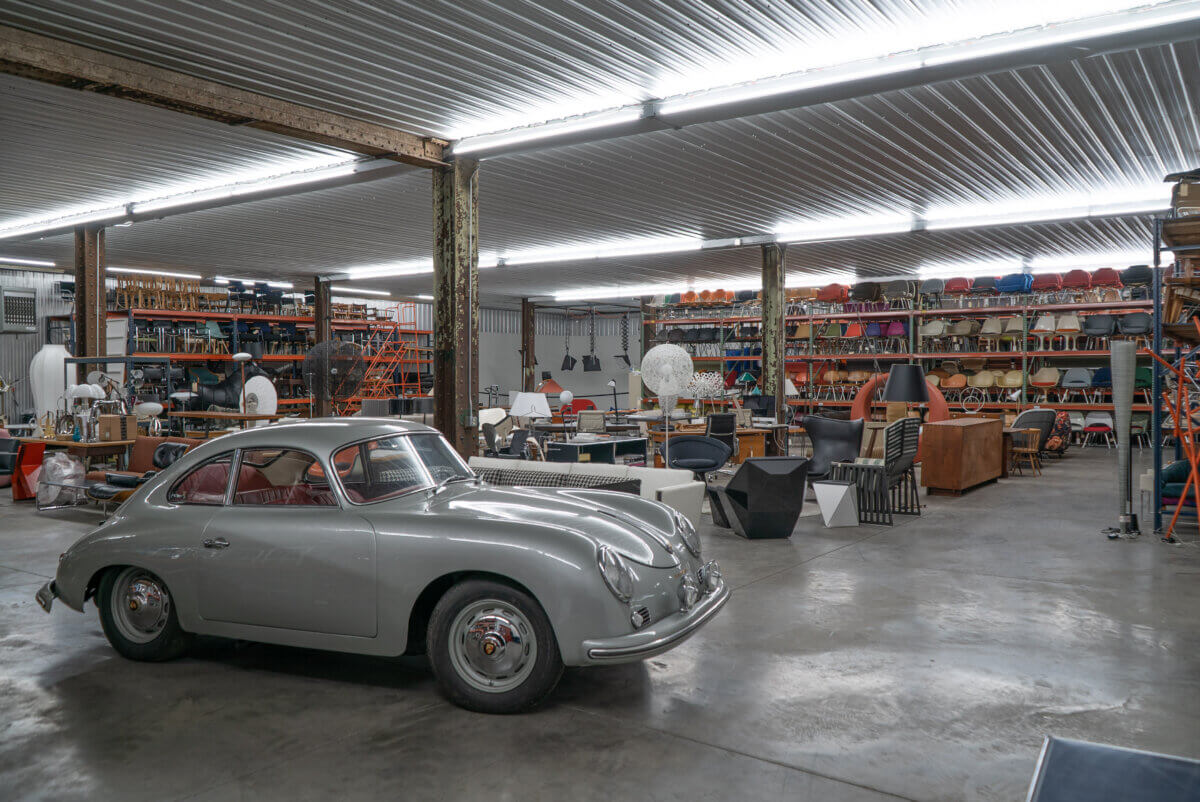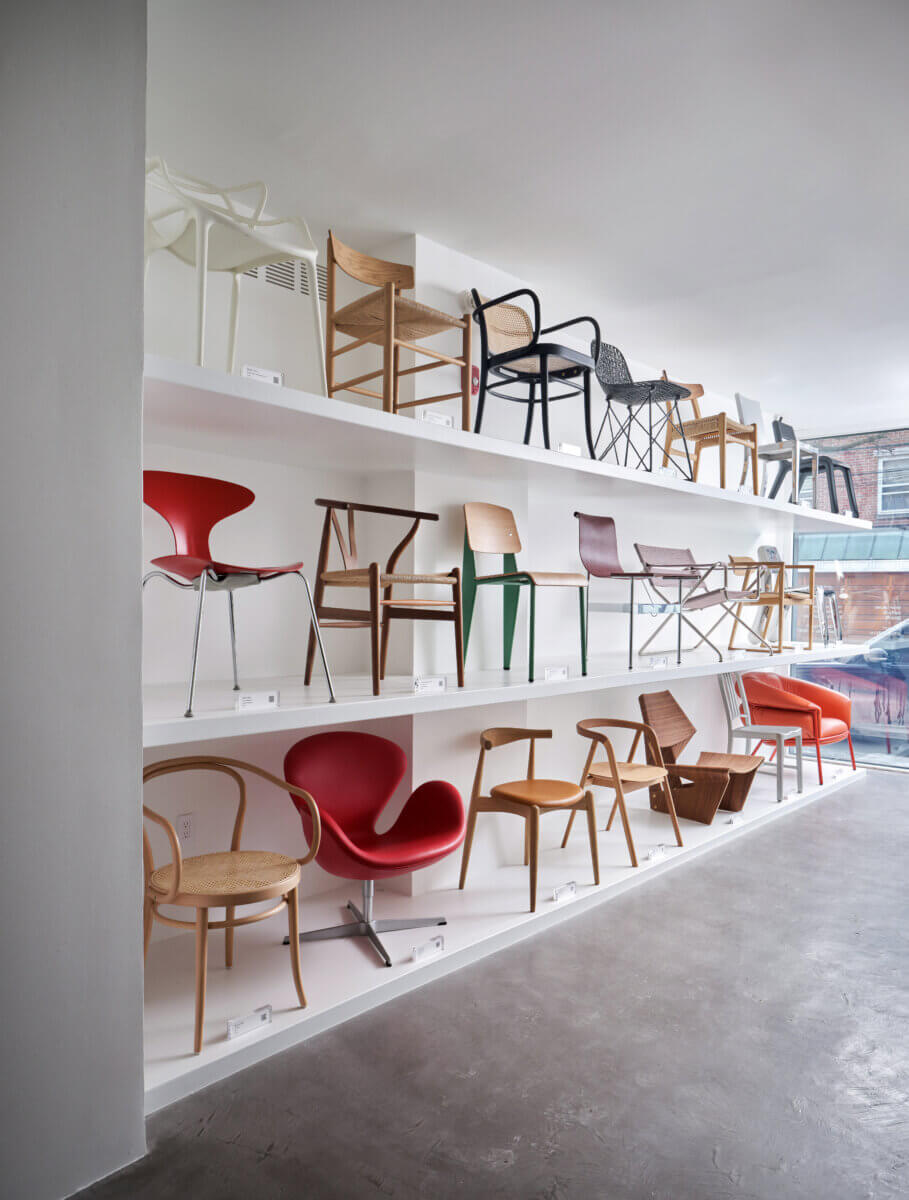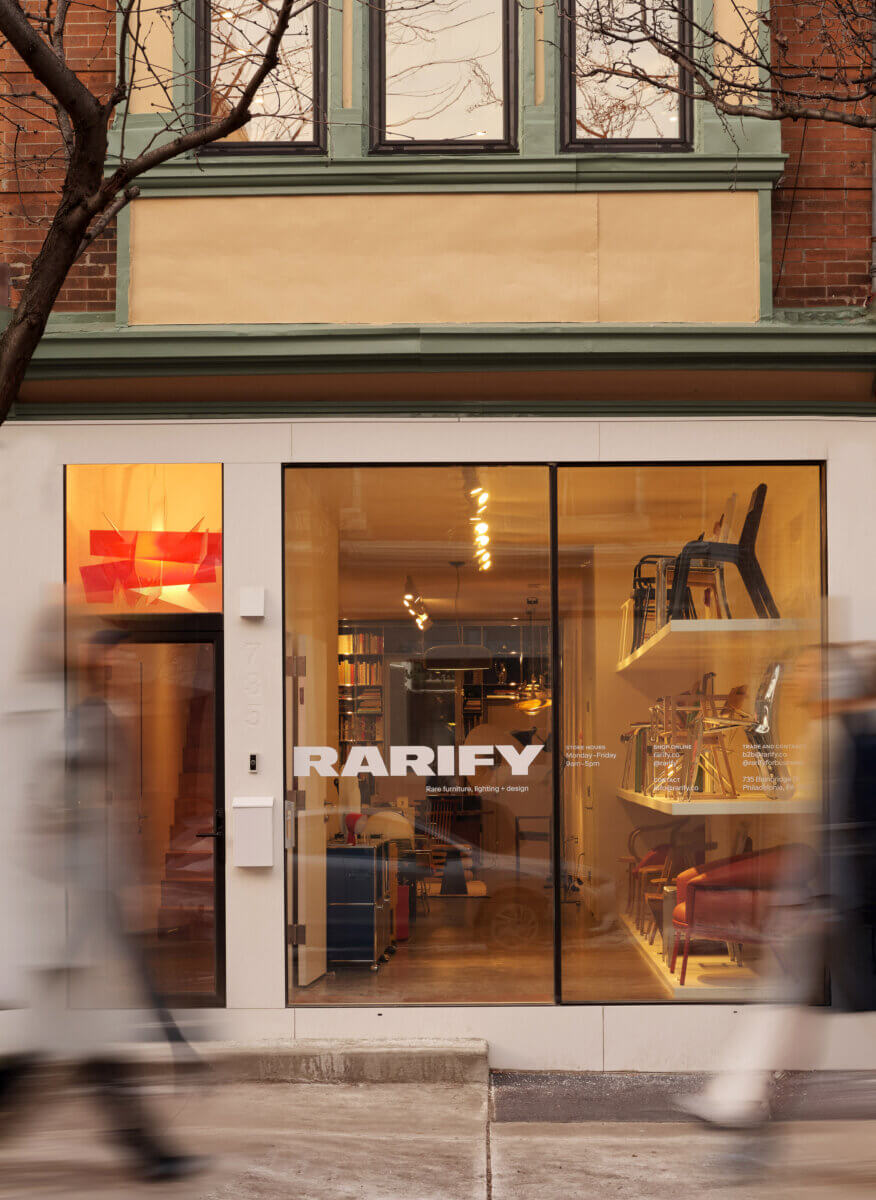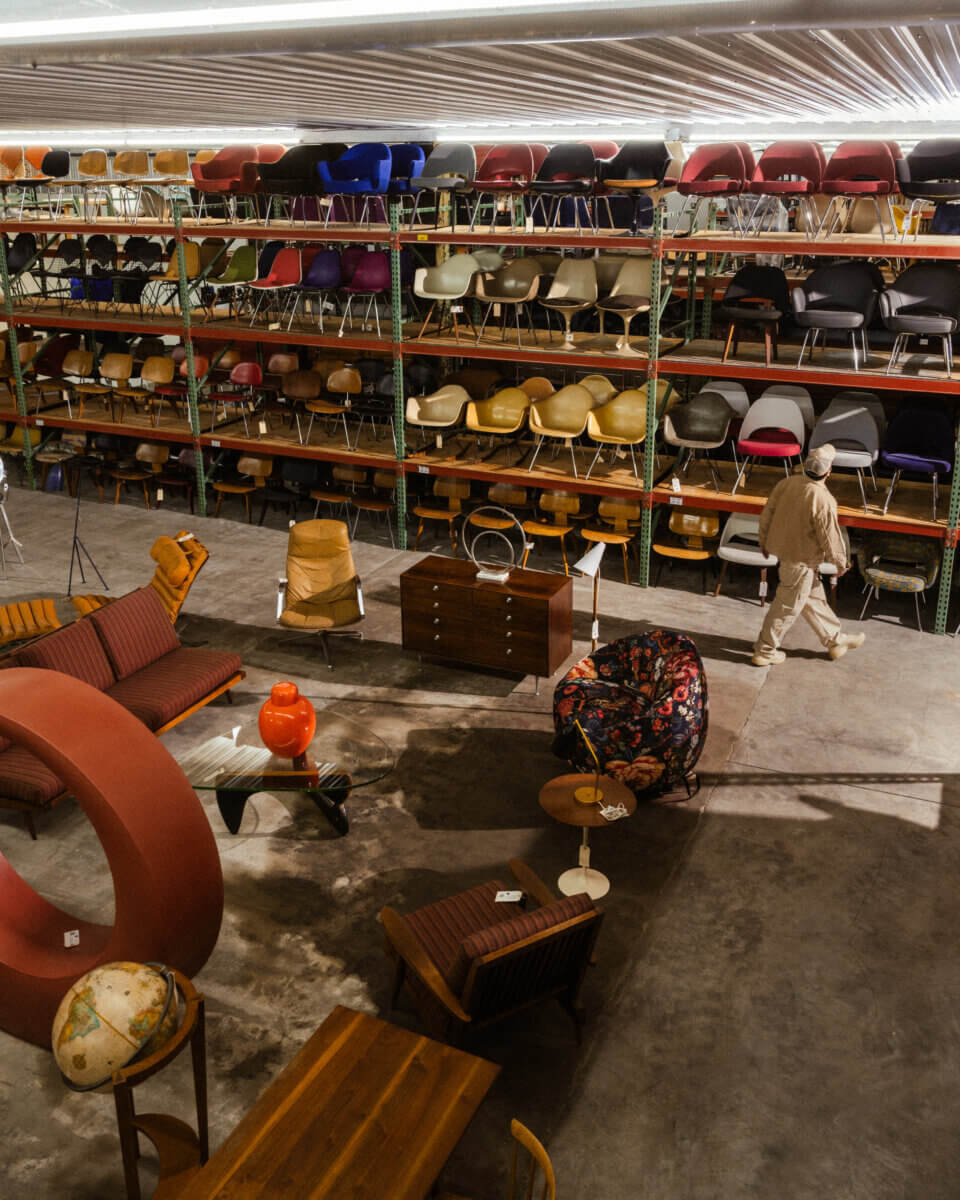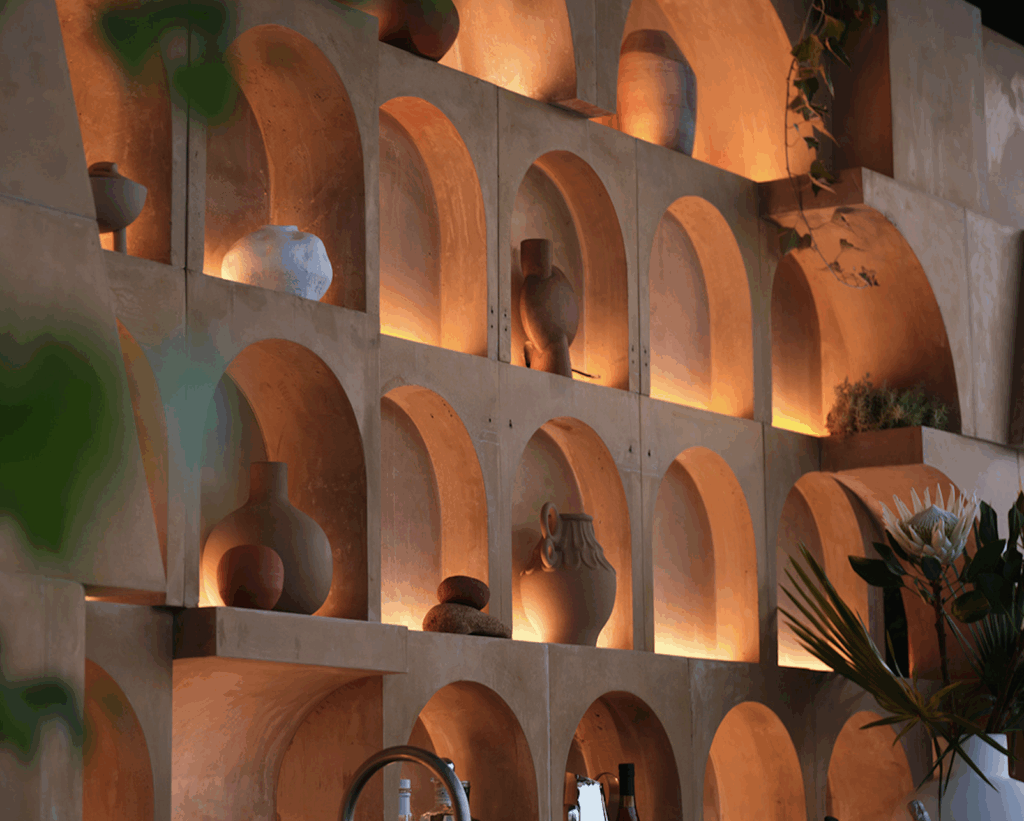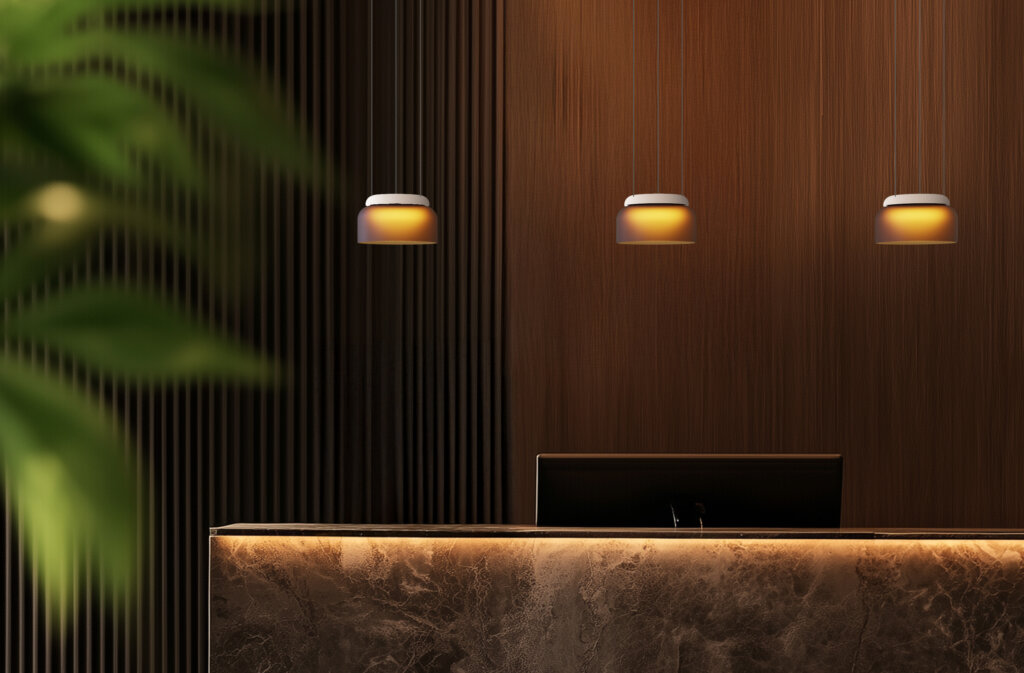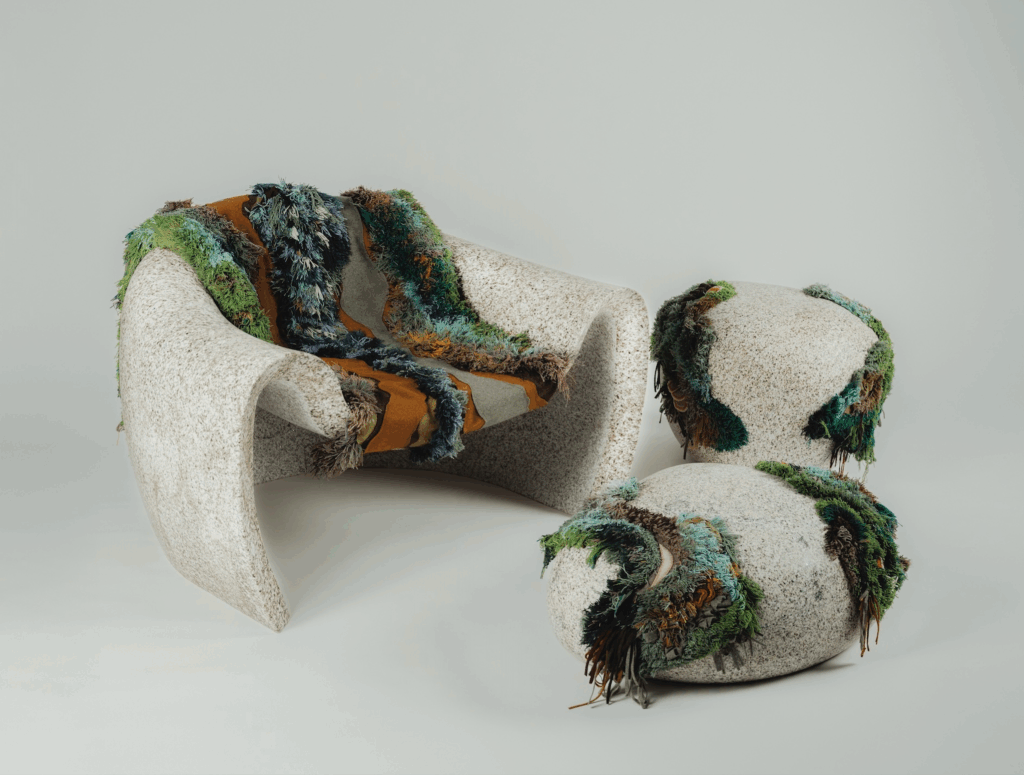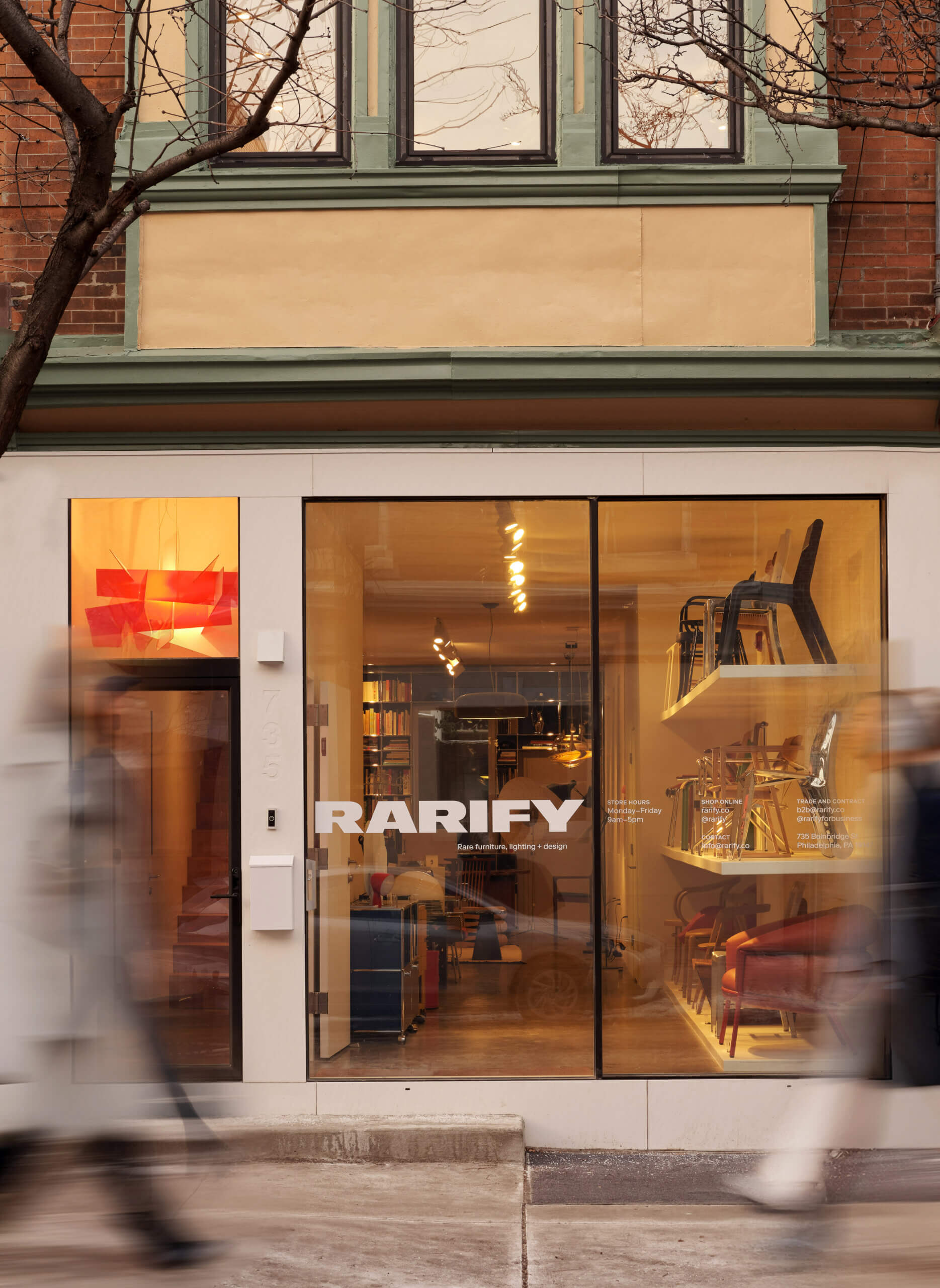
The leading-edge online marketplace is mounting a thought-provoking “anti-greenwashing” exhibition at ICFF 2025 and helping to stage Be Original Americas dining lounge.
Rarify has revolutionized the design industry. Since officially launching a few years ago, the online vintage and contemporary marketplace has emerged as a viable alternative to more established companies; many of which conceal important information and in doing so, don’t always attract younger audiences.
Rarify’s history and technology-minded founders, David Rosenwasser and Jeremy Bilotti, value transparency. The duo is prolific in producing Instagram videos that reveal the cultural significance and technical innovation of various iconic designs. They also champion the potential of scaling refurbished furniture as opposed to propagating the endless, and environmentally harmful, cycle of new production: furnishings that too often get thrown out after just a few years of use.
Over the past 15 years, the platform has amassed one of the largest furniture collections around. Though predominantly made up of locally sourced mid-20th century American designs but, it also incorporates works produced around the world between the 1920s and the recent past. One can even find pieces by Philippe Starck and Sabine Marcelis within these stores, covering a whopping 80,000-square-feet of space in rural Pennsylvania and a new Philadelphia showroom.
Restoration and repair are strategies often implemented on a case-by-case basis. Because of this approach, Bilotti, Rosenwasser, and their team have become experts in various areas of design history. Learning by physically handling the material has made all the difference.
It only seems fitting that Rarify should present the Form & Forest exhibition at ICFF 2025. Developed in collaboration with experimental design research studio Office Office and Auburn University’s School of Architecture, the comprehensive survey showcase will uncover the lasting impact of and evolution of modern wood craftsmanship. If managed correctly, natural material can be one of most sustainable options for furniture production and even architecture.
Classics by the likes of Hans Wegner, Finn Juhl, and Sori Yanagi—legendary talents that implemented the foremost joinery techniques and propelled material innovation in their time—will be placed in dialogue with equally emblematic designs by notable contemporary practitioners such as Kengo Kuma, Kenya Hara, and Motomi Kawakami. The latter selection will demonstrate the advances that have recently been made in fabrication and craft, strategies that would have seemed unimaginable in previous generations.
“Beyond the curated works themselves, the exhibition’s design is a statement in responsible making,” Rosenwasser says. “Collaborator Office Office has developed a bespoke, digitally fabricated display system crafted for quick assembly and disassembly. Following ICFF, the structure will be fully repurposed by Auburn University to serve as a dynamic showcase for student work at the School of Architecture — ensuring that every element of the project continues to inspire future generations.”
“Our mission was to look at this exhibition through the lens of craft in contemporary and iconic design,” Bilotti adds. “All of the works that we’ll be showcasing are not simply “chairs made of wood” or even “iconic chairs made of wood.” Instead, these are some of the most complex, most expensive (frankly), and most labor intensive works of furniture that fit within the canon of important design from the last 75 years. These works largely have highly complex joinery/componentry, intricate upholstery, or novel materials (such as the compressed cedar used in one of the HIDA chairs).
“The three companies on which we’re paying particular attention—PP Møbler (a family run business that specializes in the finest and most difficult to make works of Hans J Wegner), House of Finn Juhl, and HIDA Sangyo—are unusually responsible about their management of the wood.”
Rarify has also collaborated with Rodolfo Agrella (RADS) to outfit the dining lounge sponsored by authenticity and anti-copy culture organization Be Original Americas (BOA). The comprehensively imagined setting is meant to be an extension of the Form & Forest exhibition.
“We’re creating a warmer environment that uses color, light, and materiality to make it more transformative than simply a place to eat your lunch,” Rosenwasser says. “The selected partners playing a role in the staging also vary between more contemporary brands and those that are historical, but all of whom hugely value authenticity.”
These collaborating brands include Chilewich and Fyrn. While Blu Dot is supplying solid hardwood dining tables, Fritz Hansen is furnishing the space with 36 examples of their Series 7 dining chairs in natural light wood. Flos is also supplying glossy brown Gustave table lamps to amplify the ambiance of the dining lounge.
“For context, our exhibition Form & Forest will literally run along the wall parallel to the longest side of the dining lounge, so it will quite literally be a backdrop for the BOA space,” Bilotti concludes. “The hope was to take two disparate functions and groups and program/design them in a way that allowed for a more powerful experience of both through curation.”
If you are curious to discover more about Rarify, check out their website, HERE
Follow Rarify on Instagram, and if you wish to meet the team, make sure to check out their exhibit Form & Forest as well as their contributions to the Be Original Americas Dining Lounge at ICFF, May 18-20, 2025. Register now >>>
More from ICFF:
Designer Profile: Matthew Goodrich
Brand Spotlight: Vestre
